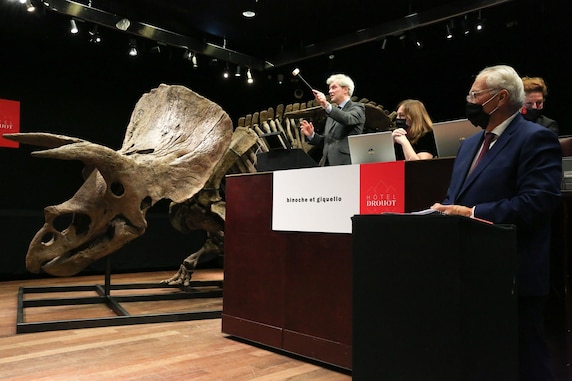The controversial sale of ‘Big John,’ the world’s largest Triceratops
The fossil’s $7.7-million sale has some experts worried that ancient bones’ rising prices will put more scientifically valuable fossils out of reach.
BY MICHAEL GRESHKO

Walter Stein was exploring a ranch in Perkins County, South Dakota, in 2014 when he stumbled across a root-covered set of bones that had tumbled out of an eroding hillside. Stein realized he was looking at the horns of a Triceratops, and despite the horns’ weathered condition, he could tell that they belonged to a big one.
The founder of a South Dakotan firm called PaleoAdventures, which digs up fossils for commercial sale, Stein nicknamed the fossil “Big John” after the owner of the ranch where he found it. For six years, he held on to the Triceratops in hopes that a U.S. museum would purchase it—but none came forward. Then, in 2020, he sold the fossil to an Italian firm that prepared it for auction. With much fanfare and a jaw-dropping sale price of $7.7 million (6.65 million euros) to an anonymous buyer last month, Big John became a big deal—and added fuel to an ongoing, thorny debate among scientists, auctioneers, commercial paleontologists, and private landowners.
Big John is just the latest high-profile fossil to sell for millions of dollars. A little more than a year ago, a scientifically important T. rex skeleton called Stan sold to an anonymous buyer in a court-mandated auction for $31.8 million—the most ever paid for a fossil. Some scientists are worried that the growing prices for ancient bones could drive future fossils into private collections, preventing researchers from studying the irreplaceable remains. (Venture inside the homes—and minds—of private fossil collectors in National Geographic magazine.)
